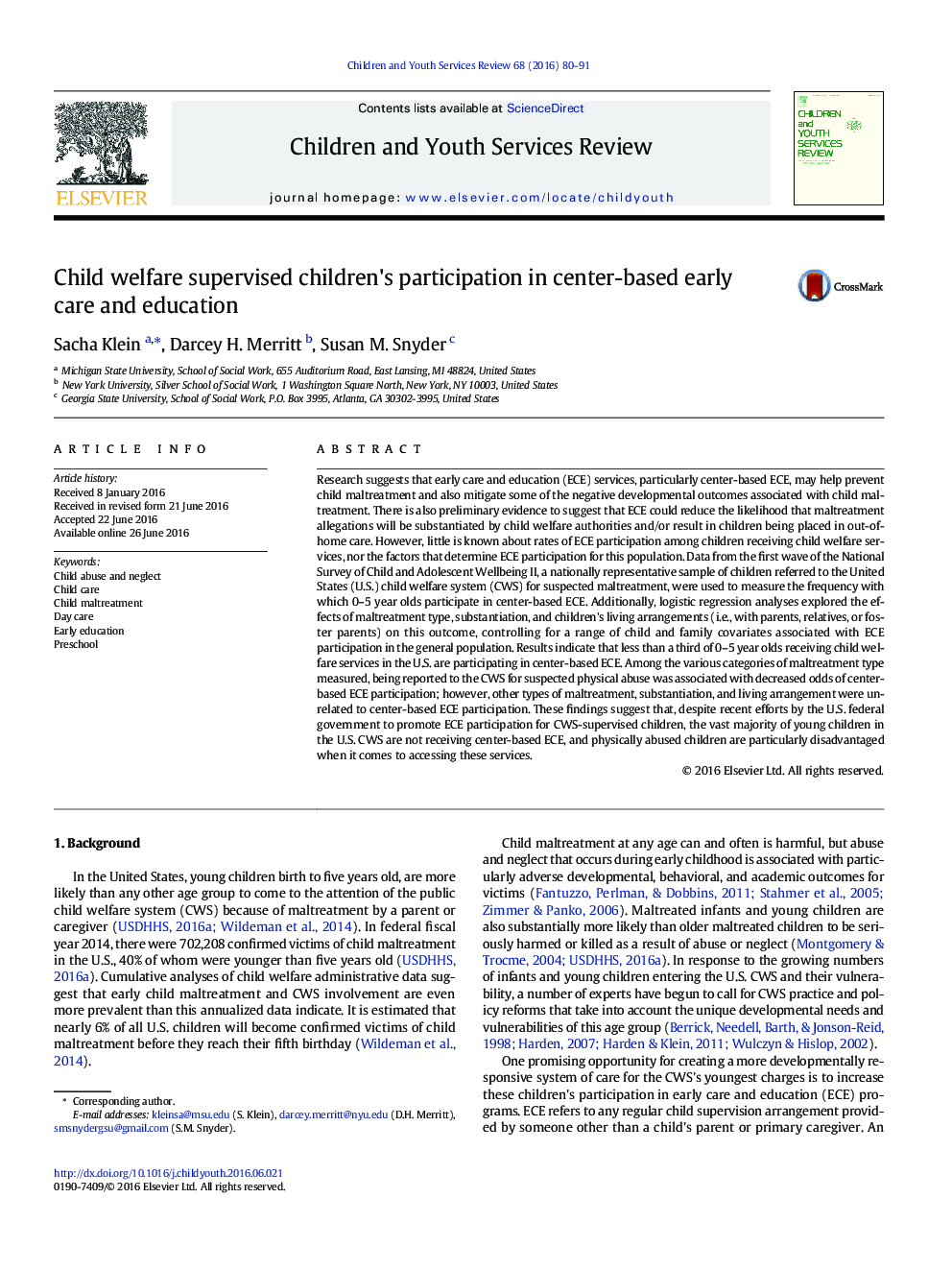| Article ID | Journal | Published Year | Pages | File Type |
|---|---|---|---|---|
| 345783 | Children and Youth Services Review | 2016 | 12 Pages |
•Benefits of early care and education (ECE) for children in, or at risk of entering, the child welfare system (CWS) are summarized.•Rates and predictors of center-based ECE participation for 0-5 year olds in the United States CWS are measured.•Fewer than a third of 0-5 year olds in the United States CWS participate in center-based ECE.•Physically abused children are less likely to participate in center-based ECE than children referred for other types of maltreatment.•Substantiation of maltreatment allegations and children’s living arrangements are unrelated to center-based ECE participation.
Research suggests that early care and education (ECE) services, particularly center-based ECE, may help prevent child maltreatment and also mitigate some of the negative developmental outcomes associated with child maltreatment. There is also preliminary evidence to suggest that ECE could reduce the likelihood that maltreatment allegations will be substantiated by child welfare authorities and/or result in children being placed in out-of-home care. However, little is known about rates of ECE participation among children receiving child welfare services, nor the factors that determine ECE participation for this population. Data from the first wave of the National Survey of Child and Adolescent Wellbeing II, a nationally representative sample of children referred to the United States (U.S.) child welfare system (CWS) for suspected maltreatment, were used to measure the frequency with which 0–5 year olds participate in center-based ECE. Additionally, logistic regression analyses explored the effects of maltreatment type, substantiation, and children's living arrangements (i.e., with parents, relatives, or foster parents) on this outcome, controlling for a range of child and family covariates associated with ECE participation in the general population. Results indicate that less than a third of 0–5 year olds receiving child welfare services in the U.S. are participating in center-based ECE. Among the various categories of maltreatment type measured, being reported to the CWS for suspected physical abuse was associated with decreased odds of center-based ECE participation; however, other types of maltreatment, substantiation, and living arrangement were unrelated to center-based ECE participation. These findings suggest that, despite recent efforts by the U.S. federal government to promote ECE participation for CWS-supervised children, the vast majority of young children in the U.S. CWS are not receiving center-based ECE, and physically abused children are particularly disadvantaged when it comes to accessing these services.
